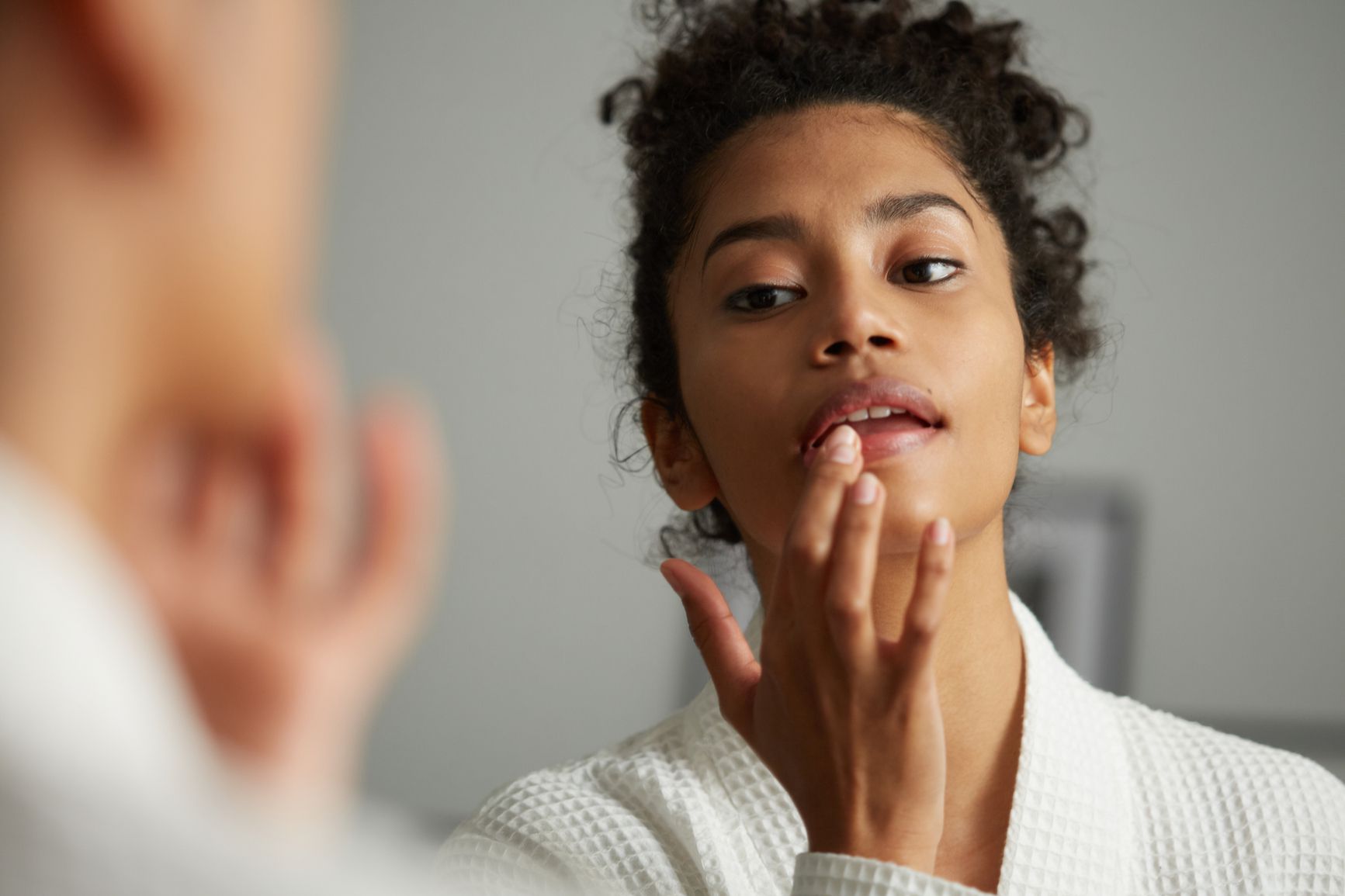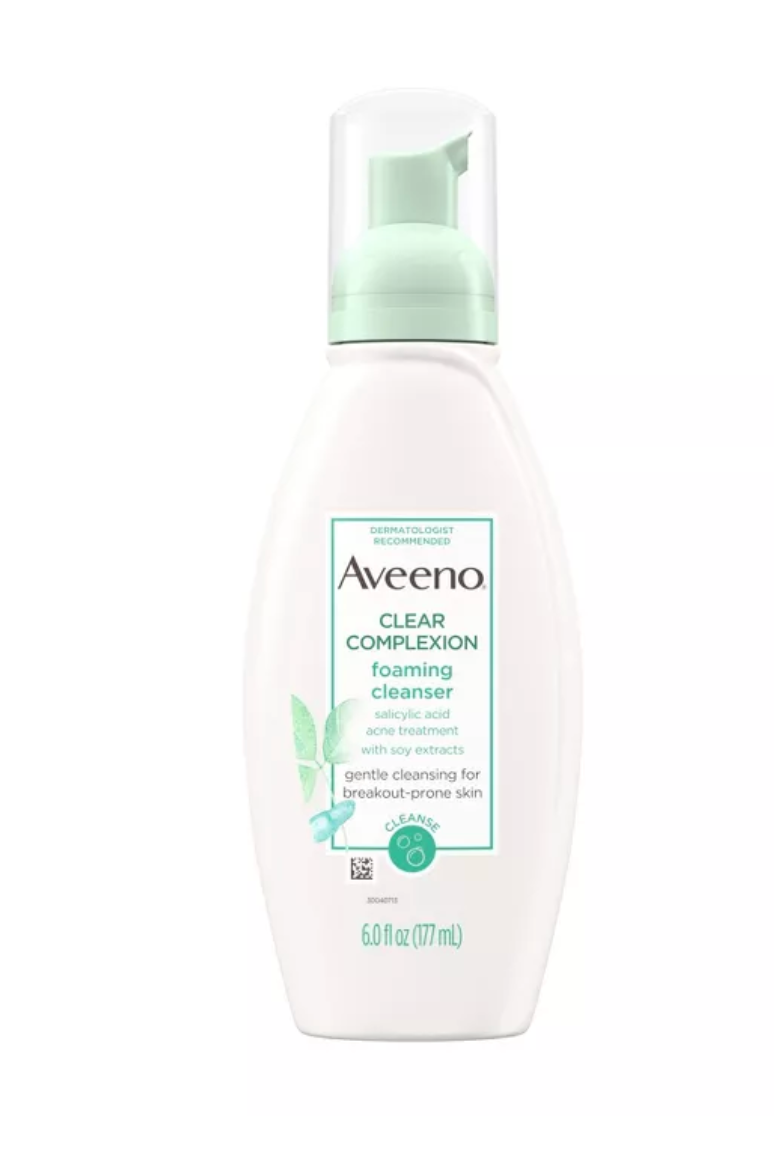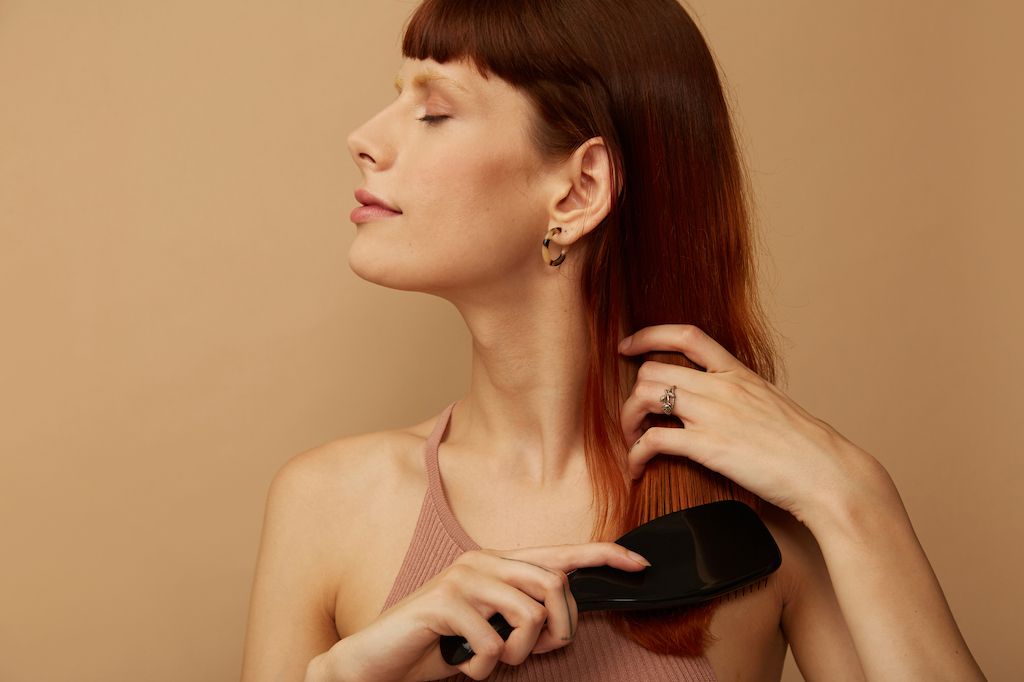Here's Why You Keep Breaking Out Along Your Lip Line

Pimples can pop up seemingly anywhere, but certain areas are more frustrating (and more painful) than others. This is certainly the case for lip pimples — those pesky little (or big) pimples that pop up on the corners of our mouths or along our lip line are not only a nuisance but can downright hurt.
Every time you talk, smile, chew, yawn — you get the idea — it’s an unfriendly reminder of the irritation and inflammation that’s popped up out of nowhere, and just isn’t going away fast enough.
To better understand these bothersome blemishes, we spoke with top New York City dermatologist Dr. Joshua Zeichner, Director of Cosmetic & Clinical Research in Dermatology at Mount Sinai Hospital. Below, he shares share his best tips for tackling lip pimples, and why you might keep getting them.
Meet the Expert
Dr. Joshua Zeichner is a dermatologist based in New York City, where he serves as the director of cosmetic & clinical research in dermatology at Mount Sinai Hospital.
What Are Lip Pimples?
Essentially, lip pimples are like any other pimples —and form for the same reasons, too. In fact, Zeichner says, “pimples are common in this area because of the high concentration and large size of oil glands around the lips.”
As with most pimples, “Oil gets trapped within the pores and promotes the overgrowth of acne-causing bacteria, which contribute to inflammation and lead to the red, painful bumps we are all used to.” Only in this sensitive area, they tend to be more painful, likely because of the large amount of movement that our lips and mouth are constantly performing — talking, chewing, etc.
They appear along the lip line and corners of the mouth as red or pink bumps that may or may not have a white head. These are NOT to be confused with cold sores, as they are quite different in visual appearance and physical cause. (Though at first, they may have a similar sensation, it’s usually pretty easy to differentiate between the two.)
To clear up any confusion, Zeichner explains, “Cold sores tend to start with a burning or stinging sensation followed by a clustered group of small blisters. In some cases, patients may develop pus bumps rather than clear blisters.” Cold sores are caused by the herpes simplex virus, while pimples are caused by bacteria.
Lip pimples may also appear red and irritated but upon a closer look are “usually a solitary, red bump.” Lip pimples may affect men and women equally.
Causes and Prevention of Lip Pimples
Most, if not all lip pimples are caused by the same pore-clogging bacteria as regular pimples that are found throughout the body and especially within the T-zone. There’s no special or different type of pimple that is reserved for the lip area—they just look and feel a little different because they’re in an area of constant use. (Rather than “resting” comfortably on your cheek or nose.)
Common Causes
- Eating Sugars and Starches: Because they’re around the mouth, it’s only natural to think that perhaps what we eat may be a contributing factor to our pimples. And in a way, it’s true. But Zeichner clarifies, “Contrary to popular belief, [consuming] oily and greasy foods are not the cause of acne breakouts, it is really sugars and starches that have shown to be the culprits.”
- Getting Grease and Oil From Food on Your Mouth: Eating greasy food might not cause breakouts internally (the way that sugars and starches do), but if oil and grease are coming into contact with your lips and the surrounding area, they could cause breakouts externally. However, in the case of lip pimples, it’s a bit different. While sugars and starches can cause breakouts to form because of what they do internally, oily and greasy foods may very well be causing the pimples externally, because “the oily and greasy foods may physically block the pores and cause breakouts.”
- Hair Removal: Hair removal is another common cause of lip pimples. According to Zeichner, whenever you pluck, wax or shave around the mouth, it can cause inflammation within the follicles which can then promote breakouts in the surrounding areas.
- The Products You’re Using: Your skincare and cosmetic products may be contributing factors, too. If you tend to break out around the mouth, “be cautious about using [exclusive lip] products. While they may be effective in hydrating the lips, they may block the pores if they cross over to the skin.”
How to Treat Lip Pimples
If you’re tempted to pop your lip pimple, you’re not alone. Some may very well be considered “pickable” according to Zeichner.
He says, “some are pickable and some are not. A red, painful bump without a head is not pickable, and attempting to pick it may cause more harm than good, leading to scabbing and potential scarring.”
But, if you see pus or a blackhead on the surface, he says that you may carefully and gently apply even, downward pressure to express the contents of the pimple. Just be certain sure both your hands and skin are properly cleansed.
If there isn’t a visible whitehead or blackhead, then instead of taking matters into your own hands (literally) Zeichner suggests using a spot treatment. “For red, angry pimples, spot treat with a benzoyl peroxide acne treatment. It lowers levels of acne-causing bacteria, calms inflammation, and dries out the pimple itself.”
Zeichner recommends Neutrogena spot treatment, with 2.5% benzoyl peroxide because it is “as effective in treating angry pimples as higher concentrations with 5 or even 10% and with less irritation.”

Neutrogena
On the Spot Acne Treatment
$5.39
Face washes containing salicylic acid, which works to remove excess oil and dead cells from the skin’s surface, are also helpful to treat and prevent lip breakouts. Zeichner suggests Aveeno Clear Complexion Foaming Cleanser, saying that it is effective without drying out your skin. It’s easy to use, too. Simply “lather it while you sing the alphabet, then rinse off.”

Aveeno
Clear Complexion Foaming Cleanser
$10.99
The Takeaway
At the end of the day, lip pimples can be a real pain — both literally and figuratively. Because of their less than ideal location, you’re reminded of their presence every time you move your mouth, which only adds to the frustration of having them in the first place.
The good news is, with the right skincare ingredients and some TLC, they can be treated and prevented in many of the same ways as any other zit. So go ahead and smile, eat, yawn, and smooch.
Introducing Beta Glucan, A Little-Known Skincare Ingredient With Big Potential








